Located in the southern part of the Pacific Ocean, halfway between California and Australia, the Islands of Tahiti are a mythical destination. Also known as French Polynesia, the nation is comprised of 118 islands dispersed across a large nautical area the size of Western Europe. The smattering of coral-fringed islands and atolls stretches south of the Equator just below Hawaii and is in the same time zone. The mention of Tahiti calls to mind visions of an idyllic island paradise and once you visit, you’ll discover that your imagination isn’t too off the mark. With sheltered blue lagoons, vibrant coral reefs, a majestic, mountainous interior, and five star overwater hotels, French Polynesia is an idyllic tropical paradise that draws visitors from all over the world. The archipelago’s legendary destinations include Tahiti, Moorea, Bora Bora and the remote and untouched Marquesas Islands.
Get the most out of your (luxury) trip to French Polynesia with my travel guide. Find out more about:
- Best time to visit
- How to get there
- Travel requirements
- Getting around
- Inspiration, highlights, & travel tips
- Suggested itineraries
- Recommended luxury hotels (+ reviews)
TRAVEL GUIDE TO FRENCH POLYNESIA: BEST TIME TO VISIT
French Polynesia enjoys a tropical climate that’s perfect year-round for a getaway. In fact, the archipelago’s Tuamotu Islands bask in almost 3,000 hours of sunshine per year, one of the highest in the world! The temperatures in French Polynesia are mild and relatively constant, and the islands are cooled by the trade winds of the Pacific that blow throughout the year. On the northern islands, the average ambient temperature is around 78°F/25°C, which is about the same as the tranquil waters of the nation’s turquoise lagoons. While farther away from the equator, the archipelagos down south (the Austral Islands and the Gambier Islands) enjoy cooler weather.
At the Polynesian latitudes, it’s summer year-round. However, you can distinguish two main Tahitian weather patterns: the dry season and the humid season.
- The dry season lasts from May to October, has balmy temperatures between 71°F and 80°F/21°C and 27°C, and is marked by mostly clear skies (with the occasional passing shower). The dry season though also brings strong trade winds, which can make water activities like snorkeling difficult and rattle Bora Bora’s overwater bungalows.
- The humid season typically lasts from November to April, is a little warmer (between 77°F and 95°F/25°C and 35°C), and subject to tropical showers. The frequent showers usually don’t last longer than 30 minutes and are often followed by vibrant rainbows and stunning sunsets. However, there’s always a chance that the downpours may last for several days. You’ll also be at risk for cyclones, so it’s important to stay alert. Flights can also be cancelled due to bad weather or lack of passengers.
The best time to visit Tahiti is the one that coincides with the activities you wish to experience:
- The best season for a beach holiday is of course the dry season, which lasts from May to October. If you’re looking for the most comfortable beach vacation possible, you’ll want to avoid the wet season of November through April.
- With technicolor reefs that teem with tropical fish, the islands of French Polynesia are world-renowned for scuba diving and snorkeling. The best time of year to explore the islands’ underwater gardens is between April and October. This is the dry season and the lack of rain makes for clear, calm waters and excellent visibility. During the wet season, rain and wind can affect visibility, but this is less problematic in the islands’ shallow, sheltered lagoons.
- Outdoor activities such as hiking and surfing are also best enjoyed in the dry season when trails are easy to navigate and waves peel as perfectly as a slice of orange. However, if you’re looking to hang ten on big barrels, the rainy season brings high waves that will challenge even the most seasoned surfers.
- To experience the jungle-clad natural scenery of French Polynesia, visit during the wet season, or “Season of Plenty,” between November and April when the vegetation in French Polynesia is particularly luxuriant. This is also the best time for those who love to sample new tastes as all the tropical fruit are ripe.
- The best time to see whales in French Polynesia is from mid-August until the end of October. This is when humpbacks migrate from Antarctica to mate and give birth. Average day and night temperatures start to rise, but humidity levels are still low enough for you to enjoy being outside for longer periods. Come to Tahiti in October to see the whales, swim with them, and enjoy clear skies, sunny weather, and fewer people on holiday. Although it’s the wettest month of the dry season, it still has only half the rainfall in November.
TRAVEL GUIDE TO FRENCH POLYNESIA: HOW TO GET THERE
There’s no doubt that getting to Tahiti takes some effort, but the payoff is well worth it. Most travelers headed to this tropical paradise arrive by air. The Tahiti-Faa’a International Airport is located on Tahiti’s main island and is close to the archipelago’s capital city Papeete. This is the only international airport in French Polynesia and it is close and convenient to all the major hotels and resorts on Tahiti. From here, you can hop on connecting flights via Air Tahiti to explore the diverse regions that make up this pristine island nation, including beautiful Bora Bora known for its turquoise lagoon and white sand beaches.
French Polynesia is easily accessible by air from the United States, and a flight from Los Angeles to Tahiti is around 7 hours and 30 minutes in duration. Many airlines fly direct to Tahiti from the US mainland, including:
- United Airlines offers five nonstop flights per week and French Bee offers three nonstop flights per week from San Francisco to Tahiti’ International airport in Faa’a.
- Air Tahiti Nui flights depart nonstop from Los Angeles nine to twelve times per week with multiple flights per day. Nonstop flights from Seattle are available twice per week.
- Air France offers direct flights from Los Angeles to Papeete five times per week.
- Delta Airlines offers nonstop flights from Los Angeles three times per week.
If you want to break up the journey to French Polynesia with a stop in Hawaii, you’re in luck: Hawaiian Airlines offers regular flights to Tahiti from Honolulu once a week. Leaving every Friday, flights arrive in Papeete and return on Saturdays, so it’s easy to schedule a one or two-week trip to French Polynesia and spend a few days in Hawaii as well.
Flights to the island of Tahiti leave from all over the globe, including direct flights from Japan, New Zealand, Chile, and Australia. Flight time varies depending on your departure location. Here is a comprehensive list of flight durations from popular international airport hubs to French Polynesia:
- Paris – Papeete: 22h00 (with a short stopover in Los Angeles, Seattle or San Francisco)
- Los Angeles – Papeete: 08h00
- Seattle – Papeete: 10h00
- San Francisco – Papeete: 08h00
- Honolulu – Papeete: 05h00
- Nouméa – Papeete: 06h20
- Tokyo – Papeete: 11h00
- Shanghai – Papeete: 12h30
- Hong Kong – Papeete: 11h30
- Sydney – Papeete: 09h05
- Auckland – Papeete: 05h00
- Rarotonga – Papeete: 02h30
- Santiago du Chili – Papeete: 11h00
- Hanga Roa (Easter Island) – Papeete: 04h50
Before you buy a plane ticket, consider reading my tips & tricks for buying the cheapest plane ticket.
TRAVEL GUIDE TO FRENCH POLYNESIA: ENTRY REQUIREMENTS
Requirements for entry into French Polynesia differ from country to country, and are subject to change. Prior to departure, always check with your government and your nearest French embassy or consulate what documents you need for travel to French Polynesia. Some important points:
- First, check to see if you need a visa for French Polynesia by visiting the official visa website for France. Take a quick test to determine whether you need a visa.
- Visitors holding a residence permit from one of the countries of the European Union or the Schengen Area are exempt from the requirement to obtain a visa provided that their residence permit is valid for the duration of their stay in French Polynesia.
- For U.S. and Canadian Citizens: your passport must be valid for a minimum of three months after the return date. No visa is required for stays of up to 90 days.
- Any foreigner who wishes to stay more than three months in French Polynesia must apply for a long-term French Polynesia visa with the exception of citizens of the exempt countries.
- Chinese tourists can book a trip without visa to French Polynesia through a travel agency approved by the visa office of the French embassy, the visa free policy is only applicable to ADS tour groups with less than 15 days stay.
Make sure you read my 10 tips to plan a worry-free trip.
TRAVEL GUIDE TO FRENCH POLYNESIA: GETTING AROUND
Once you’ve arrived in Tahiti, you may want to head straight to your hotel or resort, or you may be bound for a different island such as the ever-enchanting Bora Bora and Moorea islands. Regardless of where you’re bound, you can easily book connecting flights and other modes of transportation around the Islands of Tahiti.
- Air travel is the most popular means of island hopping. While Faa’a International Airport welcomes large international wide-body jets, many airports throughout the archipelago will see just a handful of small passenger planes each week. The domestic airline Air Tahiti is the primary mode of transportation between islands. Regular flights leave daily to and from the international airport in Papeete. Flight time between Tahiti and Moorea is only 10 minutes, while the flight time between Tahiti and Bora Bora is 50 minutes.
- if you’re headed to Moorea, there is a daily ferry service from Tahiti that takes about 30 minutes one way.
- Public transportation is widely available on the Tahiti main island. There is a bus system and taxis for transport to your hotel, the airport, and the ferry terminal. On the outer islands, public transportation is less common. Rental cars and motorcycles are available in Tahiti, Moorea, Bora Bora, Huahine, Raiatea and Taha’a. However, other than your own two feet or a local boat, you may not even need transportation once you’re in paradise.
- Cruise ships depart from within Tahiti and island hop within the national borders. Papeete serves as the gateway for cruises to the French Polynesian archipelagos. To embark on an inter-island cruise, travelers must fly into Tahiti-Faa’a International Airport in Papeete, which is the jumping off point for ocean odysseys. From there, you can easily hop on Tahitian cruise ships and explore the enchanted isles via Tahiti’s blue waterways.
- Paul Guaguin Cruises are among the most luxurious and popular inter-island cruises. The company’s sleek ship carries up to 332 passengers and features comfortable cabins, an expansive deck, and an outdoor pool. Guests also have access to a multitude of watersports such as kayaking, paddle boarding and scuba diving.
- If you’ve ever dreamed of sailing the Pacific, a trip aboard Tahiti’s Windstar Cruises offers the chance to explore the tropical archipelago beneath billowing white sails. While the ship is smaller than a traditional cruise liner, the intimacy and romance of a Windstar cruise is miles away from ordinary.
- Additionally, you can experience the wonders of French Polynesia on cargo cruise ships such as the Aranui 5, which offers 14-day live-aboard excursions, or the Tuhaa Pae IV, which cruises bi-monthly to the oft-undiscovered Astral Islands.
TRAVEL GUIDE TO FRENCH POLYNESIA: INSPIRATION, HIGHLIGHTS & TRAVEL TIPS
French Polynesia is a destination composed of 118 islands and atolls in 5 archipelagos. The country’s three most popular island locations are Tahiti, Bora Bora, and Moorea:
- Crowned by a circle of majestic peaks, the island of Tahiti, the largest of islands in French Polynesia, towers over the South Pacific ocean. The mountainous interior and coast of Tahiti a is adorned with mystical valleys, coral reefs, crystal clear waters, and high waterfalls. Most of the island’s population resides near the shore, leaving the interior of the island feeling almost untouched and ancient, despite such proximity to the bustling capital of Papeete. Papeete, meaning “water basket,” was once a gathering place where Tahitians came to fill their calabashes with fresh water. Now, Papeete, the touchstone of this island nation, boasts several hotels, spas, restaurants, nightclubs, vibrant markets, museums, pearl shops, and boutiques.
- With a shape like a heart looking down at the island from above, it is no surprise that Moorea island – a 30 min ferry ride or 10min flight from Tahiti – is the second most popular honeymoon destination on French Polynesia (after Bora Bora). Eight mountain peaks rise magically out of the ocean like a cathedral. Pastel-painted houses, surrounded by gardens of hibiscus and birds of paradise, circle the island in a necklace of happy, simple villages that will elevate your senses and remind you that this is what Polynesian lifestyle is all about. Moorea offers visitors an authentic experience, boasting “la vie heureuse,” as they say in Tahiti, a happy life.
- The south pacific island of Bora Bora could easily be defined as the center of the romantic universe, where luxury, beach resorts, and spas dot the island with overwater bungalows, thatched-roof villas, and a fabled ambiance. Bora Bora is located on a dormant volcano island, set on one of the world’s most beautiful and crystal-clear lagoons, colored in a million shades of blue. The legendary island is located a brief 50-minute flight from Tahiti or Moorea.
But besides Tahiti, Moorea and Bora Bora, French Polynesia is also home to several other less known island gems. Here are some examples:
- The island of Taha’a can be seen from Bora Bora, and like its world-famous neighbor, it offers astoundingly clear waters and a relaxing break from modern life. This charming and quiet island sweeps you deep into the typical Polynesians’ easy going life. Tiny motus with luminous white sand beaches surround the flower-shaped island with a soft mountain rising from the calm waters of a lagoon.
- Formerly named Hava’i, Raiatea is located next to Taha’a and is known as the gods’ cradle, hosting archeological treasures (marae, petroglyphs…) and eons of history and culture. As the first Polynesian island to be populated, Raiatea shelters the most spectacular and first marae of the Polynesian triangle, called Taputapuatea. Raiatea is the top yachting location as the island hosts a large number of moorings, bays (deep and calm) in a pristine and amazing environment.
- Surrounding one of the world’s greatest destinations for scuba diving, the 240 islets of Rangiroa string together in the ocean for more than 110 miles (177 km), completely encircling a deep lagoon and forming the world’s second largest atoll. The beautiful loop of islands is surrounded by different kinds of ocean: Moana-tea (Peaceful Ocean), which defines the lagoon, and Moana-uri (Wild Ocean), where whales, manta rays, dolphins and sharks put on a show for the lucky few who come to experience their world.
- About a three hour flight from Tahiti are the Marquesas Islands. These rugged, quiet islands are renowned within French Polynesia for their rich culture and breathtaking nature. Surrounded by cliffs, the coasts of the Marquesas Islands are a mix of black sand beaches and gorgeous bays. In the lush rain forest, where thousands of pre-European artifacts lie, you’ll discover wild horses, goats, boars, and other wildlife. Nuku Hiva, the largest of the Marquesas, lures visitors with its lush valleys, ancient religious sites, and towering waterfalls. The island of Hiva Oa also receives tourism due to its wild landscape, giant stone tiki, and rich history (it’s the final resting place of the performer Jacques Brel and artist Paul Gauguin).
There are so many things to do when visiting the Islands of Tahiti, you’ll be hard-pressed to accomplish them all. Highlights include:
- Exploring white sand beaches (the best beaches are found on Bora Bora)
- Swimming with humback whales (Moorea, Tahiti)
- Swimming with sharks and manta rays (Bora Bora)
- Staying in an overwater bungalow (Bora Bora, Moorea)
- Staying at The Brando, one of the world’s most exclusive hotels
- Admiring the island’s spectacular scenery from a bird’s eye view by helicopter
- Watching surfers ride Teahupo’o in southern Tahiti, one of the heaviest waves in the world
The following, comprehensive articles may also inspire you and help you plan your holiday to Namibia:
- Top 10 best things to see & do in French Polynesia
- Top 10 best luxury hotels & lodges in French Polynesia
- Top 10 best luxury hotels & lodges in Bora Bora
- St Regis vs Four Seasons Bora Bora: which one is best?
- How to book a stay at The Brando
- Tips & tricks for getting the best deal at a luxury hotel
- Tips & tricks for buying the cheapest plane ticket
TRAVEL GUIDE TO FRENCH POLYNESIA: SUGGESTED ITINERARIES
It’s impossible to suggest one itinerary for French Polynesia in this travel guide, but I hereby share with you a schedule based on my own experience, which is great if you want to see the country in a time frame of two weeks:
- Day 1 & 2 (2 nights): arrive in Tahiti and relax after the long journey to the island
- Recommended hotel: InterContinental Tahiti Resort & Spa
- Day 3 to 5 (3 nights): take the ferry to Moorea and explore the island
- Recommended hotel: Sofitel Kia Ora Moorea Beach Resort, Hilton Moorea
- Day 6 to 10 (5 nights): take a flight to Bora Bora and relax in an overwater villa
- Recommended hotel: Four Seasons Bora Bora, St Regis Bora Bora, InterContinental Bora Bora & Thalasso Spa, Conrad Bora Bora
- Days 11 to 14 (4 nights): take a private flight to The Brando and explore the Tetiaroa Atoll
- Recommended hotel: The Brando
- Day 15: fly back to Tahiti for your international return flight
Some remarks:
- If you arrive early morning in Tahiti, you may as well skip the (somewhat overdevelopped) island of Tahiti and immmediately proceed to the island of Bora Bora or Moorea which have more to offer in terms of tourist attractions and accomodations.
- If you have only one week, I suggest you stay 3 nights in Moorea and 4 nights in Bora Bora, or alternatively, 7 nights in Bora Bora.
- If you have more than two weeks, you can get off the beaten track and explore some of the archipelago’s more remote destinations, such as Rangiroa and the Marquesas Islands.
For more ideas, I suggest the excellent French Polynesia itineraries as provided by the Frommer’s.
TRAVEL GUIDE TO FRENCH POLYNESIA: RECOMMENDED HOTELS (+ REVIEWS)
I recommend to visit my top 10 list of the best hotels in French Polynesia if you are eager to know how I rank Namibia’s top hotels, based my own experience.
Below, you find my detailed reviews of hotels in French Polynesia (with pros, cons, & tips to save money per hotel).
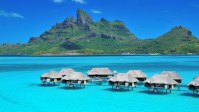 Review: Four Seasons Resort Bora Bora
Review: Four Seasons Resort Bora Bora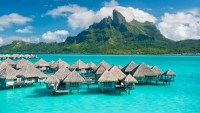 Review: St Regis Bora Bora
Review: St Regis Bora Bora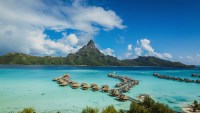 Review: InterContinental Bora Bora Resort & Thalasso Spa (French Polynesia)
Review: InterContinental Bora Bora Resort & Thalasso Spa (French Polynesia)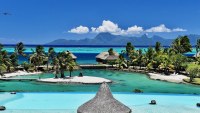 Review: InterContinental Tahiti Resort & Spa (French Polynesia)
Review: InterContinental Tahiti Resort & Spa (French Polynesia)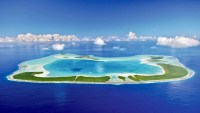 Review: The Brando (French Polynesia) – PHENOMENAL resort
Review: The Brando (French Polynesia) – PHENOMENAL resort
*** Follow me on Instagram, YouTube, Twitter, and Facebook for a daily moment of travel inspiration ***


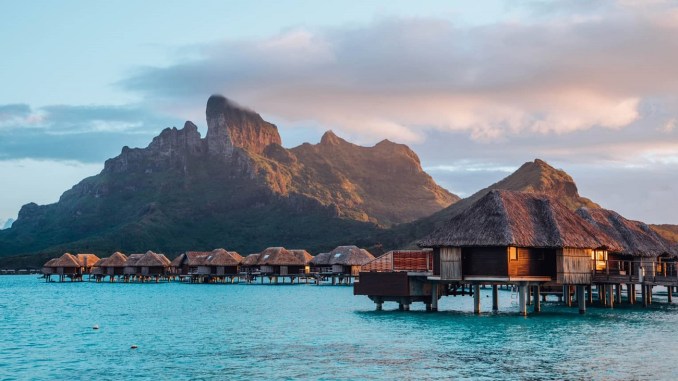
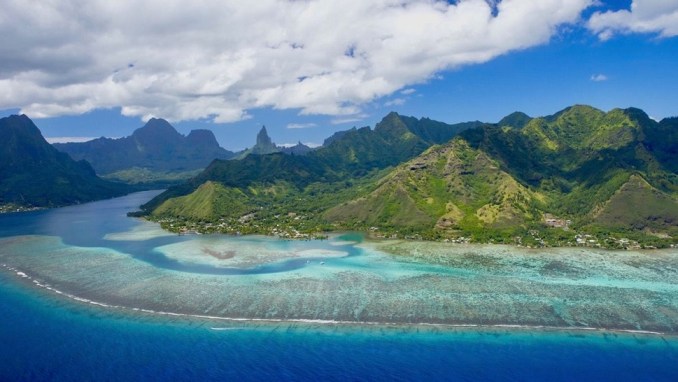
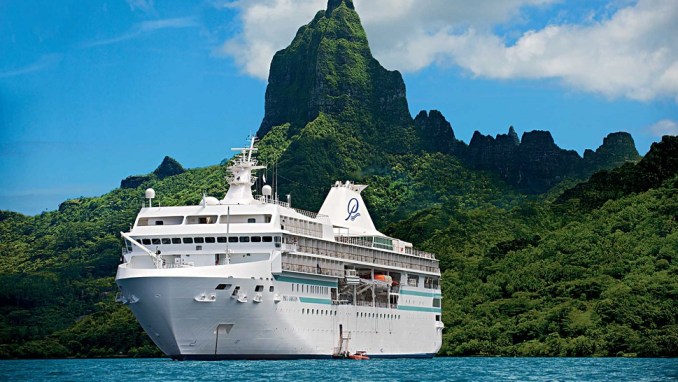
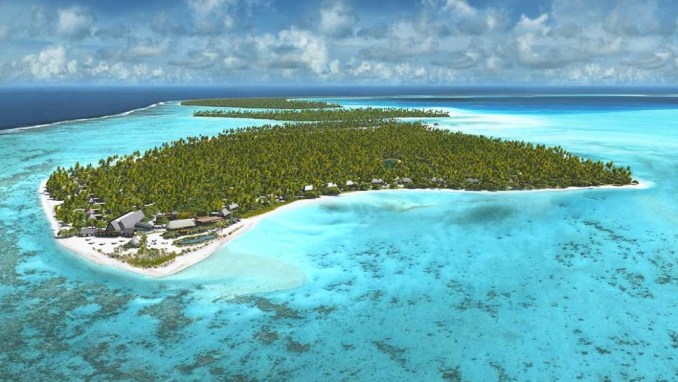
Be the first to comment